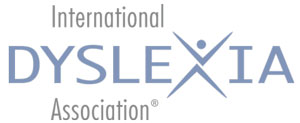The International Dyslexia Association encourages and supports research on dyslexia, and we do our best to share what we learn from that work, including how professionals can apply those findings in the field. In that spirit, we share two thoughtful responses to the Floch and Ropars study.
The first, found below, is from Posie Boggs, Editor-in-Chief of our e-newsletter for parents, Dyslexia Connection. The other is from Mark Seidenberg, author of Language at the Speed of Sight and a cognitive neuroscientist and professor at the University of Wisconsin–Madison.
As future analyses and developments related to the Floch and Ropars study may emerge, we will share what we learn. As always, the International Dyslexia Association endeavors to help you stay abreast of and informed about relevant research and other dyslexia developments.
Viral Controversies in Dyslexia: The Good, the Bad, and the Ugly
by Posie Boggs
All too often, a viral research study flames across my Internet feed, sometimes giving too much attention to a relatively small study. The study might be eloquent in its methodology and design, have hopeful results, and honest and explicit descriptions of its limitations. However, once it starts spreading across the Internet and is picked up by the media, it flashes as bright as an LED bulb that can be seen across the universe.
All sorts of journals, tabloids, websites, and bloggers jump for joy because they are always starved for content and material. Some of them may offer articles from qualified, knowledgeable researchers, but others are obvious attempts to grab our attention without offering much substance or evidence.
So what should the community who cares about dyslexia do to sort out the good research from the media noise that empowers research beyond the limitations of a study?
- First, check to see if the article or post is based on dogma or science. Is the purpose of the story primarily to bring attention to the blogger, journal, or tabloids? Or, is it offering an evaluation of the study’s methodology, design, results, and limitations?
- Second, ferret out the headline’s attention grabbing words versus the actual recommendations of the study. It’s quite easy for a blogger to take one little phrase from a research study and blow it out of proportion in a headline.
- Third, create a list of trusted research organizations whose work is to translate the research for public consumption. Let them vet the quality of the research article and put the study into perspective. For example, if there are only one or two articles on a certain subtopic, it’s not likely to fit well in the whole body of research knowledge about that topic. For example, “Left–right asymmetry of the Maxwell spot centroids in adults without and with dyslexia” may or may not completely be supported by the scientific community, but the scientific community in the dyslexia field is the one best suited to evaluate that question.
In addition to the International Dyslexia Association, such trusted research organizations include those found at https://www.nichd.nih.gov/research/supported/Pages/ldrc.aspx:
- Florida State University, Tallahassee: NIH Multidisciplinary Learning Disabilities Center
- University of Colorado, Boulder: Colorado Learning Disabilities Research Center
- University of Houston: Texas Center for Learning Disabilities
- Finally, be extremely cautious of products based on the results of just one or two research studies with limited support for what they’re trying to sell you.
Researchers are working hard to help us understand dyslexia and how to help individuals who struggle to read. As much as we would like to find a cure or quick fix, we won’t find it in one story about one study—something to keep in mind the next time you see a dyslexia study go viral.

Posie Boggs is an active advocate for educating students, parents, educators, and policy makers on the necessity of improving literacy in our nation and the world. She has emphasized that providing comprehensive research-based literacy education early to all our students and adults who struggle with literacy is essential to increasing our nation’s educational outcomes. Equally important is providing educators extensive, rigorous, and multidisciplinary training in the knowledge and practice of teaching the “3 Rs.” As founding president of the Alaska Branch of the International Dyslexia Association, she uses every opportunity available to communicate that research about dyslexia provides a critical base of knowledge that contributes to all aspects of literacy acquisition and instruction. Ms. Boggs has a Masters in Educational Diagnostics and a Bachelor’s of Science in Nursing. She haunts the Institute of Education Science and the What Works Clearing House to keep her knowledge on the cutting edge of literacy science. She has received training in and utilizes the following scientifically evidenced methods for teaching literacy and reading: The RAVE-O™ program, Lindamood-Bell™ programs, including On Cloud Nine Math©, LIPS©, Visualizing Verbalizing©, Seeing Stars©, LAC3 Test©, Slingerland™ – Level 1, & 2 and the Writing Institute™
Share this with your friends and family…

